The B52 Victory Museum in Hanoi is a strong symbol of Vietnam’s strength and perseverance during a challenging time in its past. This famous museum not only keeps alive the stories of an important war but also connects the past with the present, giving people a special chance to learn about the Vietnam War and how it shaped the country. Let’s dive into the fascinating history, varied displays, and deep lessons that the B52 Victory Museum has in store for all who visit, whether from near or far.
Introduction

The B52 Victory Museum, situated in the heart of Hanoi at 157 Đội Cấn, is a poignant testament to Vietnam’s stoic resistance during the Vietnam War. This museum is integral to remembering the significant “Dien Bien Phu in the Air” battle, an event that encapsulated the resilience and indomitable will of the Vietnamese people against American air raids. Inaugurated on December 22, 1997, the museum spans two critical areas: an outdoor exhibition area extending over 4,000 square meters, and a 1,200 square-meter indoor space that offer a rich tapestry of Vietnam’s military history.
This museum not only catalogs the remnants of wrecked B-52 bombers but also narrates the unparalleled heroism and strategic brilliance of the Vietnamese forces. With carefully curated artifacts, multimedia presentations, and vivid three-dimensional recreations, the B52 Victory Museum serves as a powerful reminder of the monumental struggle and eventual triumph over a technologically superior adversary. It embodies the very essence of Vietnam’s national pride and the enduring legacy of the “Dien Bien Phu in the Air” victory.
Overview of the B52 Victory Museum
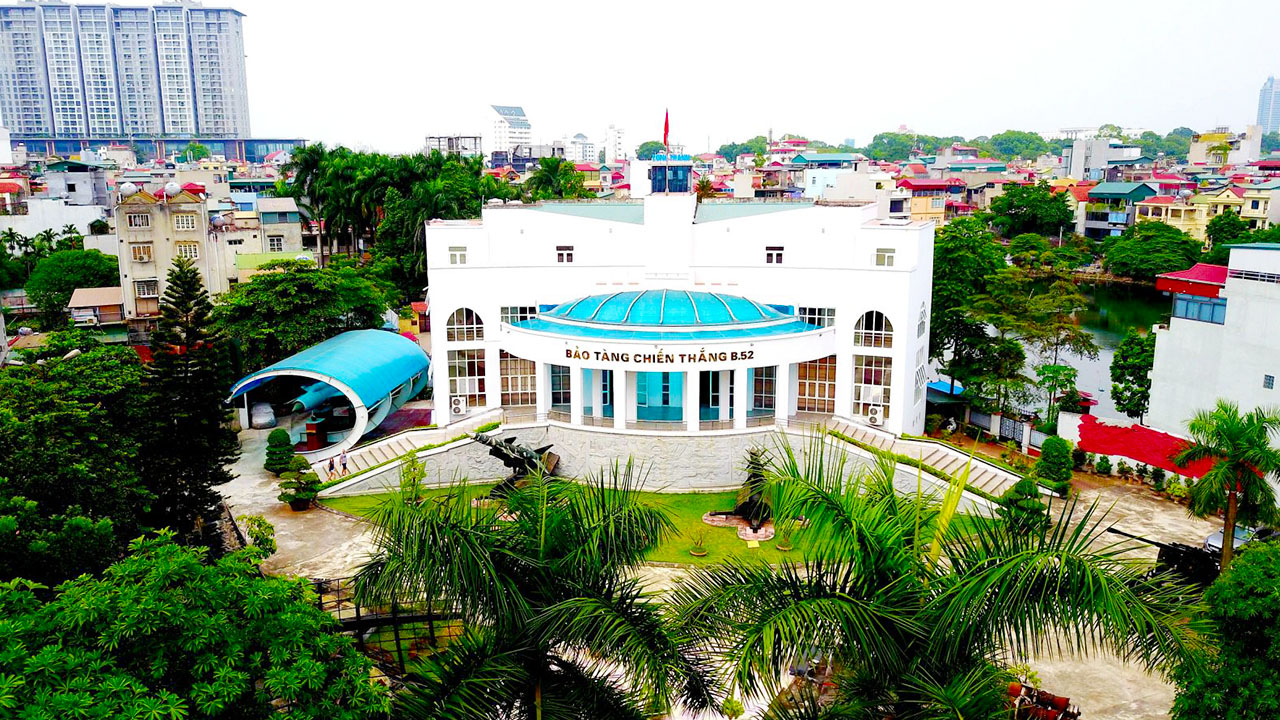
Laid out strategically in Hanoi’s Ba Dinh district, the B52 Victory Museum stands as a stark reminder of the “Dien Bien Phu in the Air” battle that took place in December 1972. The museum’s mission is to preserve the historical context of this pivotal conflict and showcase the ingenuity and courage of the Vietnamese military and civilians in the face of overwhelming odds. It celebrates the victory over the United States’ strategic bombing campaign, known as Operation Linebacker II, which was aimed at bringing North Vietnam to its knees.
Vietnamese resilience, combined with strategic brilliance, led to the downing of 81 American aircraft, including 34 B-52 bombers, which were considered the backbone of the US Air Force. This victory symbolized a turning point in the Vietnam War, compelling the US to sign the Paris Peace Accords, ultimately ending the war and restoring peace in Vietnam.
Historical Significance of the “Dien Bien Phu in the Air” Battle
The “Dien Bien Phu in the Air” battle is a monumental event in Vietnamese history. It unfolded between December 18-30, 1972, when the US launched a massive aerial bombing campaign over Hanoi and other northern cities. This operation, dubbed Linebacker II, was meant to force North Vietnam into submission. Yet, against all odds, the Vietnamese forces, armed with Soviet-supplied air defense systems, managed to shoot down numerous B-52 bombers and other aircraft, thereby causing significant losses to the US Air Force.
The implications of this battle were far-reaching. Not only did it devastate the US’s strategic capabilities, but it also showcased Vietnam’s unyielding spirit. This victory thwarted President Nixon’s ambitions of “bombing North Vietnam back to the Stone Age,” marking a critical turning point in the Vietnam War. The battle’s lessons continue to resonate, highlighting the importance of political will, strategic innovation, and unyielding resistance in the face of superior technological foes.
The Museum’s Role in Preserving History and Commemorating Victory
The B52 Victory Museum serves a multifaceted role in commemorating Vietnam’s historic victory. By preserving wreckage, artifacts, and detailed records, the museum ensures that future generations understand the sacrifices and strategic brilliance that defined this period. It provides visitors with a comprehensive understanding of the Vietnamese people’s resilience, offering insight into their ingenuity and indomitable spirit that led to one of the most significant victories against a technologically advanced adversary.
Inside the museum, visitors can explore detailed exhibits depicting the tactical maneuvers, life during the air raids, and the aftermath of the B-52 bombings. The museum’s role extends beyond education; it instills national pride and reminds the Vietnamese people of their rich history and heritage. Through preserving these artifacts, it becomes a symbol of national unity and pride, celebrating the collective efforts that led to Vietnam’s victory.
Exhibits and Displays
Outdoor Exhibition Area
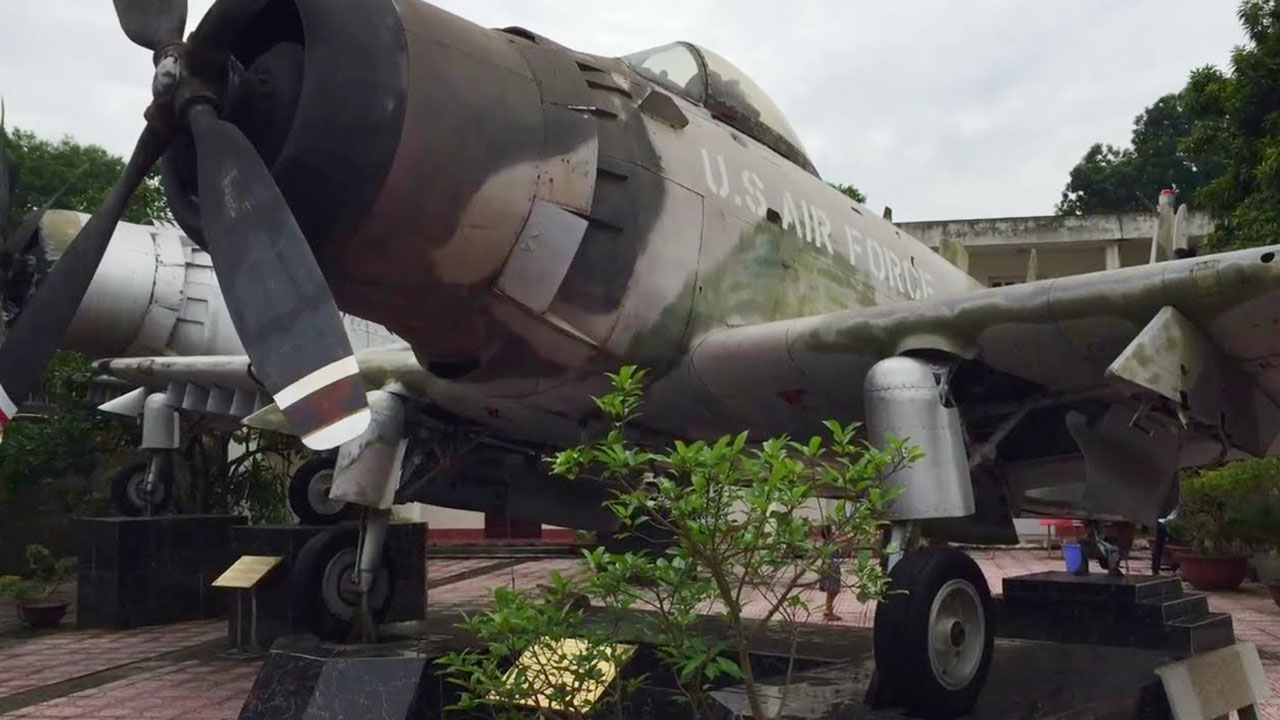
The outdoor exhibition area of the B52 Victory Museum spans a vast 4,000 square meters and is replete with tangible artifacts from a turbulent era. Among the most impressive exhibits is the life-size wreckage of a B-52 aircraft, measuring 59.05 meters in length and with a wingspan of 56.39 meters. This colossal display is surrounded by various weapons, radar systems, and wreckage, providing a sobering glimpse into the remnants of the US Air Force’s defeat.
In addition to the B-52 remains, the museum showcases weapons and equipment used by Vietnamese forces during the battle. These include surface-to-air missiles (SAMs), anti-aircraft artillery, and other defensive tools that played a critical role in the Vietnamese victory. The outdoor area is not only about displaying wreckage but also about narrating the story of the intense air raids and the valiant efforts that led to the triumph over an advanced enemy.
Indoor Exhibition Area
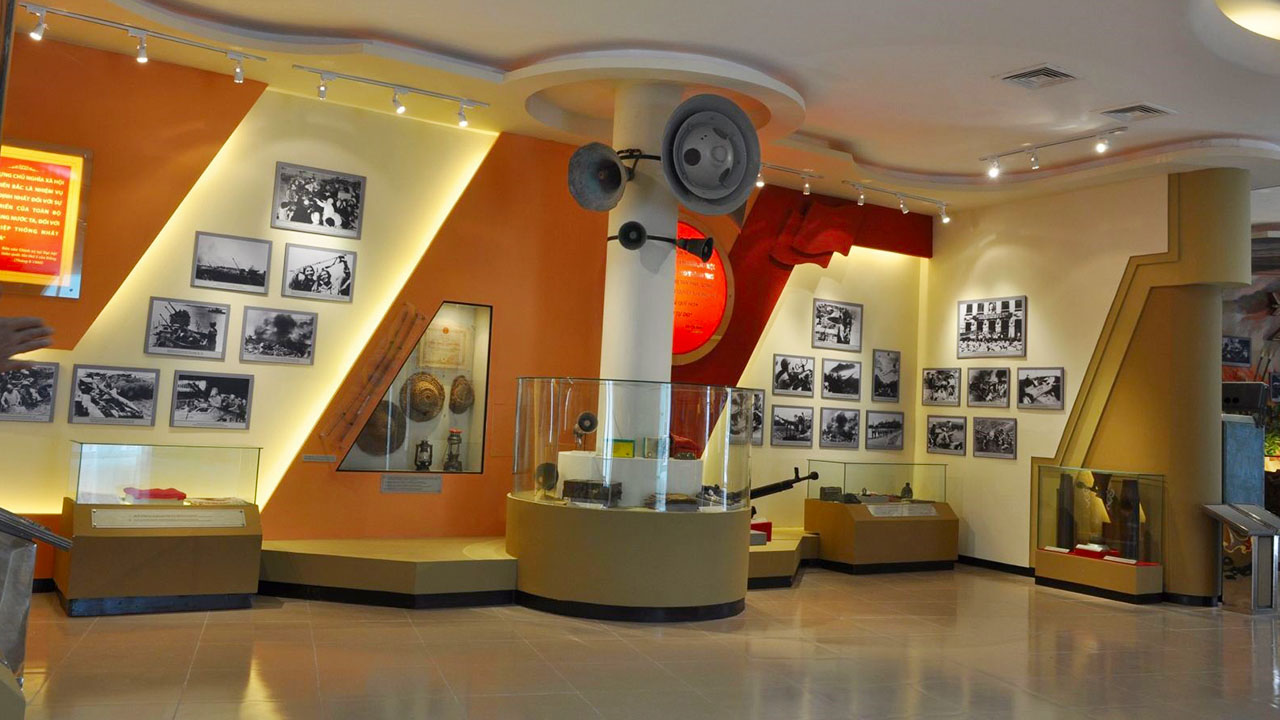
The indoor exhibition area spans two floors and covers 1,200 square meters, meticulously designed to offer a detailed narrative of Vietnam’s military history. This indoor space houses artifacts from the First Indochina War, the Vietnam War, and specifically the air defense operations during the “Dien Bien Phu in the Air” battle.
Visitors can explore exhibits that include multimedia presentations, detailed models, and historical documents that vividly depict the events leading to the victory. One of the highlights is the three-dimensional recreations that allow visitors to immerse themselves in the scenes of the battle. These displays offer an educational journey through Vietnam’s strategic military maneuvers, the people’s resilience during the bombings, and the ultimate victory that shaped the course of the country’s history.
The indoor exhibition area also includes interactive components, providing a dynamic learning experience. Detailed records, letters, and personal belongings of those who participated in the battle add a personal touch, connecting visitors with the human aspect of the historical events. The museum ensures that informational content is accessible, with translations in both Vietnamese and English, making it an inclusive educational resource.
Visiting the Museum
Address and Location
The B52 Victory Museum is conveniently located at 157 Đội Cấn, Ba Đình District, Hanoi, Vietnam. This central location makes it accessible to both local and international visitors. Ba Đình District is renowned for its historical significance and hosts several notable landmarks, including the Ho Chi Minh Mausoleum and the Presidential Palace, making it an ideal area for a historical exploration tour.
Opening Hours and Ticket Price
The museum operates from 8:00 AM to 11:30 AM and 1:30 PM to 4:30 PM, except on Mondays and Fridays when it remains closed. The ticket price is reasonably set at 30,000 VND per person, making it an affordable destination for all.
| Day | Opening Hours |
|---|---|
| Tuesday-Thursday | 8:00 AM – 11:30 AM, 1:30 PM – 4:30 PM |
| Saturday-Sunday | 8:00 AM – 11:30 AM, 1:30 PM – 4:30 PM |
| Monday | Closed |
| Friday | Closed |
How to Reach the Museum
Reaching the B52 Victory Museum is straightforward. Situated just 3.4km from the city center, it is easily accessible by various modes of transportation.
By Motorbike or Car
You can use Google Maps or other navigation tools to drive directly to the museum. The route is well-marked, and there is ample parking available.
By Taxi or Ride-Hailing Apps
Services like Grab and Be are popular in Vietnam. You can book a ride through these apps, especially if you are traveling with a group or have special needs.
By Bus
Several bus lines, including buses 143, 49, 99, CNG03, and CNG05, stop near the museum. This is a convenient and cost-effective option for those preferring public transportation.
| Mode of Transportation | Details |
|---|---|
| Motorbike/Car | Direct route using navigation tools, ample parking |
| Taxi/Ride-Hailing Apps | Accessible through Grab or Be, ideal for larger groups |
| Bus | Lines 143, 49, 99, CNG03, CNG05 stop near the museum |
Regulations and Notes for Visitors
When visiting the B52 Victory Museum, certain regulations need to be adhered to ensure a respectful and enjoyable experience.
- Group Visits: Schools and organizations intending to visit as a group should register in advance.
- Dress Code: Visitors are expected to dress appropriately. Leave large bags and luggage in designated areas.
- Prohibited Items: Visitors should not bring flammable or explosive items into the museum.
- Conduct: Maintain a serious and respectful attitude throughout the visit. Follow staff instructions diligently.
- Interaction with Exhibits: Do not touch the displays or glass partitions. Any damage caused will be the visitor’s responsibility.
These guidelines ensure the preservation of the exhibits and provide a dignified environment for all visitors.
The Legacy of the B52 Victory Museum
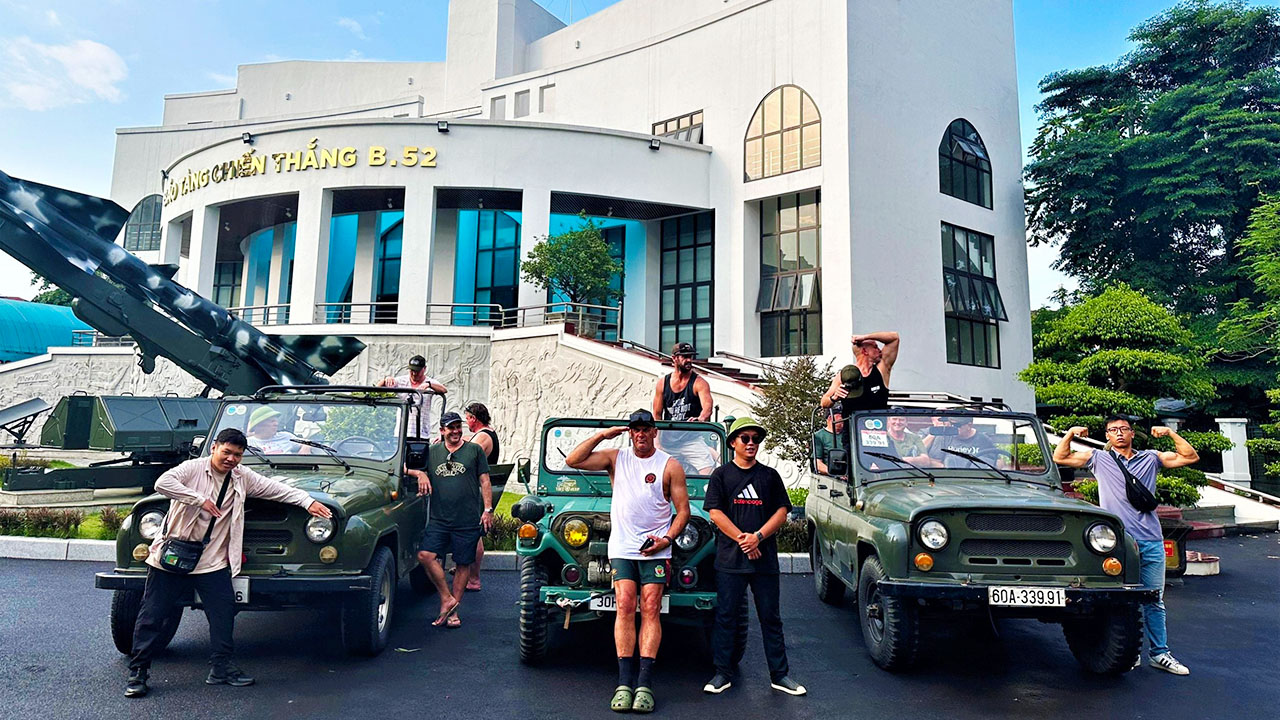
The Museum’s Impact on Tourism and Education
The B52 Victory Museum has made a dramatic impact on both tourism and education in Vietnam. Serving as a crucial educational resource, it provides an in-depth understanding of Vietnam’s military history and the pivotal role of the “Dien Bien Phu in the Air” battle.
Tourism Impact
The museum attracts numerous tourists annually, eager to delve into Vietnam’s rich historical narrative. By offering a unique glimpse into the Vietnam War through highly detailed exhibits and real-life wreckage, it positions itself as a must-visit attraction in Hanoi. The heritage district of Ba Đình adds another layer of historical significance, enriching the overall visitor experience.
Educational Impact
Educationally, the museum serves as an invaluable resource for schools, military academies, and researchers. The comprehensive exhibits, combined with multimedia presentations, make for an engaging and educational tour. Schools often organize trips to the museum, enabling students to connect with their nation’s history on a deeper level.
By blending historical artifacts with detailed explanations and interactive displays, the museum ensures a multi-faceted learning experience. It emphasizes the importance of resilience, innovation, and strategic brilliance, fundamental to Vietnam’s victory over a superior technological force.
The Museum’s Role in Preserving Vietnam’s History and Heritage
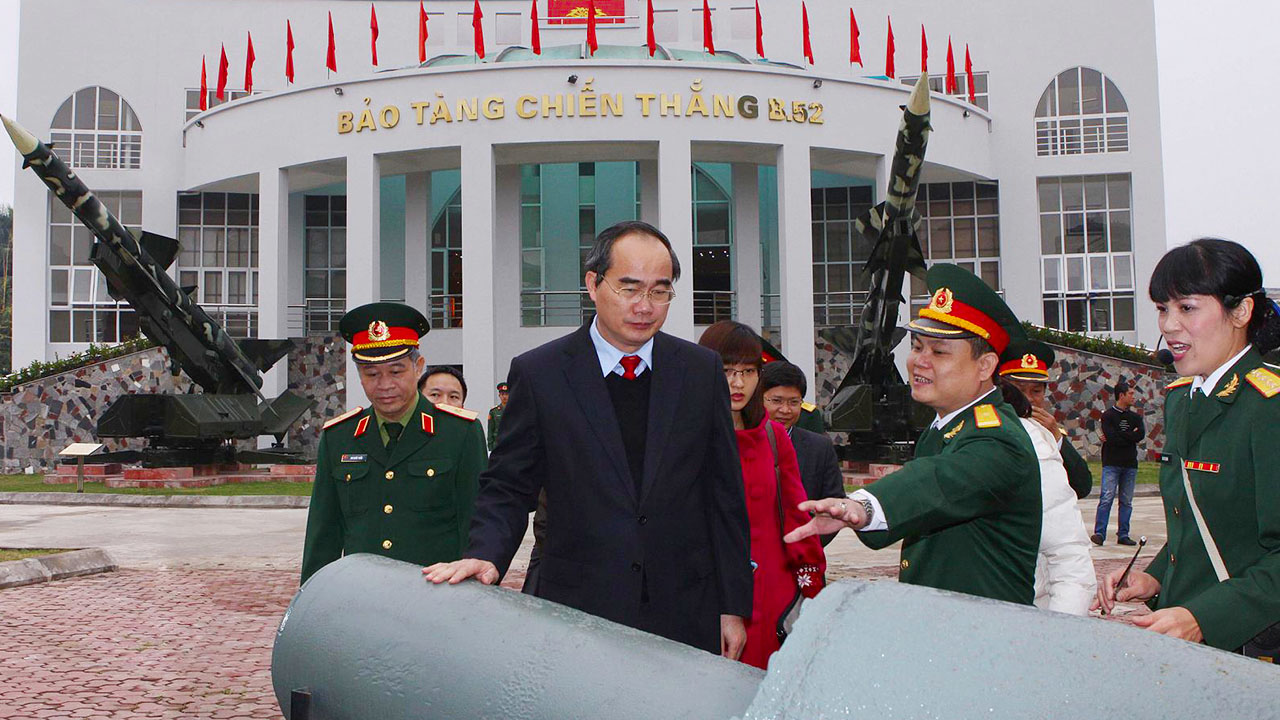
The B52 Victory Museum stands as a steadfast guardian of Vietnam’s historical and cultural legacy. It meticulously preserves artifacts, documents, and narratives from the “Dien Bien Phu in the Air” battle, ensuring that the heroism and sacrifices are never forgotten.
Historical Preservation
The museum’s extensive collection of wreckage, from fallen B-52 bombers to radar systems and anti-aircraft artillery, serves as a poignant reminder of the intense air raids and the resilience that led to victory. By chronicling these events, the museum offers a detailed account of a critical period in Vietnamese history, ensuring that future generations understand and appreciate the sacrifices made.
Cultural Heritage
Culturally, the B52 Victory Museum enriches Vietnam’s national narrative. It honors the bravery and strategic acumen of the Vietnamese people, embedding these values into the national consciousness. Situated in a historically rich district, the museum also adds to the cultural tapestry of Hanoi, providing a deeper understanding of Vietnam’s path to sovereignty and independence.
The Museum’s Importance as a Symbol of National Pride and Resilience
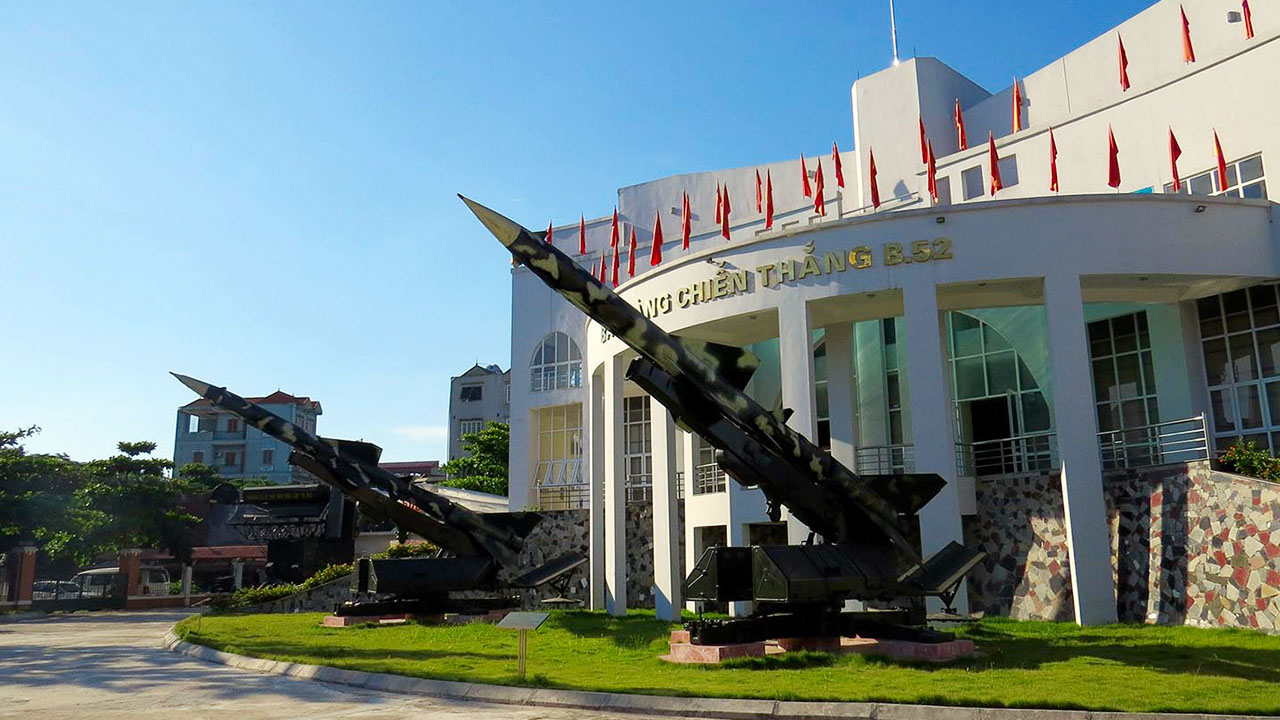
The B52 Victory Museum serves as a powerful symbol of national pride and resilience, commemorating a defining victory in Vietnam’s long history of struggle for independence.
Symbol of Indomitable Spirit
The museum encapsulates the indomitable spirit of the Vietnamese people. The “Dien Bien Phu in the Air” victory stands as a testament to Vietnam’s determination and ability to overcome formidable challenges. The presence of the museum in Ba Đình district, coupled with its comprehensive exhibits, instills a sense of pride and inspiration among visitors.
Legacy and Inspiration
By commemorating this historic event, the museum not only preserves the past but also inspires future generations. It serves as a reminder that resilience, strategic thinking, and national unity can overcome even the most daunting adversities. The B52 Victory Museum thus continues to be a beacon of national pride, inspiring Vietnamese people and educating visitors about the true essence of resilience and victory.
Conclusion
The B52 Victory Museum in Hanoi honors Vietnam’s resilience during the war. It showcases Operation Linebacker II and sacrifices made by the Vietnamese people.
Explore the museum to understand Vietnam’s struggles, advancements, and pride. It is a cultural landmark for future generations to learn and reflect on.
Immerse yourself in Vietnam’s history at the museum through artifacts and narratives. Experience the country’s journey towards unity and progress.
When visiting the museum, follow its rules, join educational programs, and support sustainability. Embrace the stories and lessons for a meaningful cultural experience.


